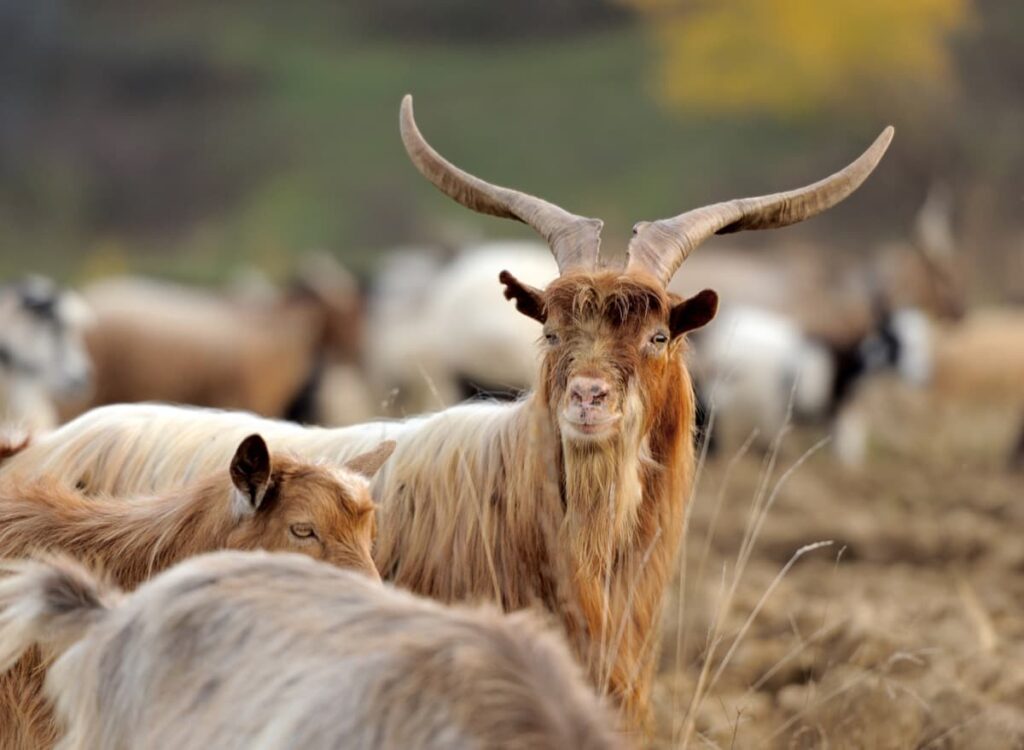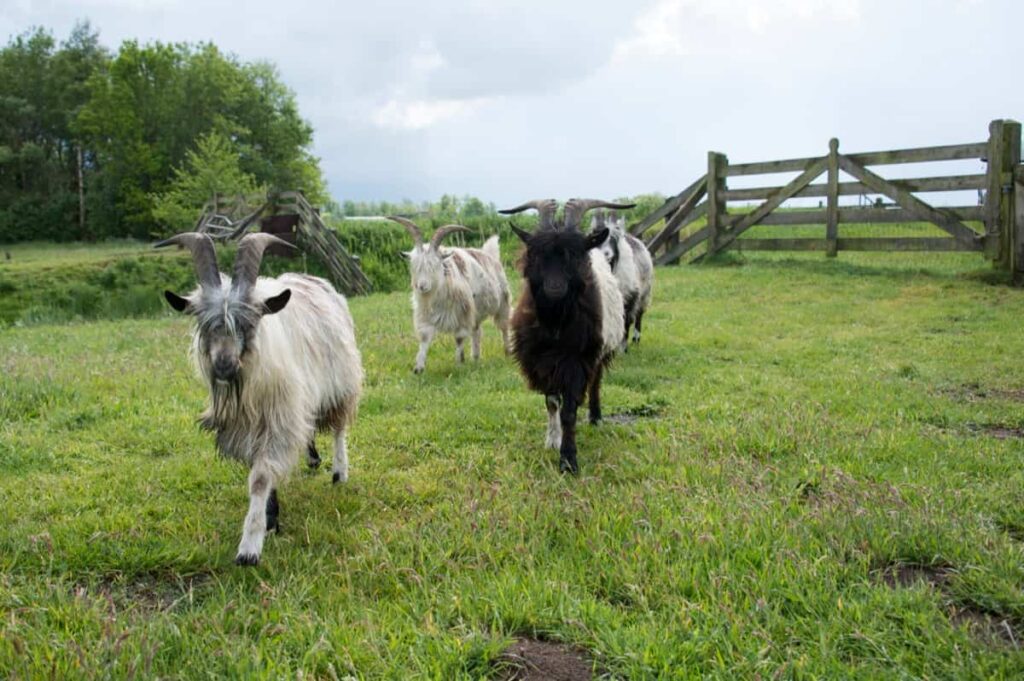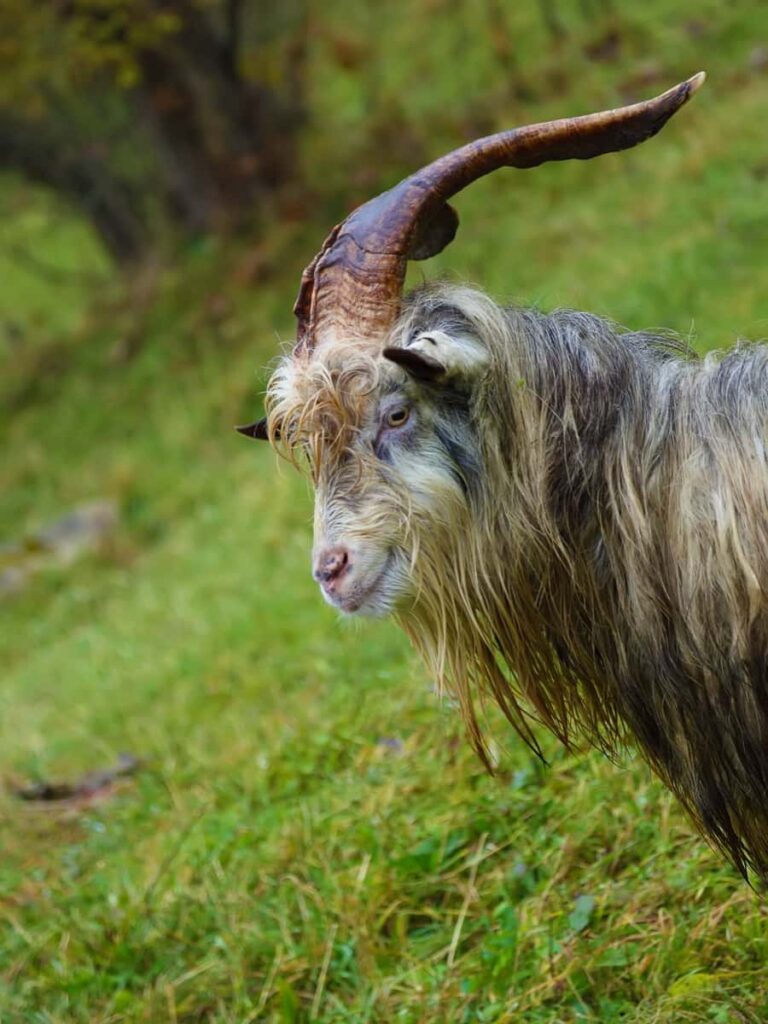The Aspromonte goat is a unique breed of domestic goat native to the Aspromonte mountains in Southern Italy. They have a rich history, having been used for centuries in the region for their meat, milk, and wool. However, in recent times, the breed has faced challenges such as a decline in population and genetic diversity. Aspromonte goats have distinctive physical and behavioral characteristics, making them well-adapted to their mountainous habitat. Their meat and milk are highly valued in traditional Italian cuisine, and the breed has the potential for sustainable agriculture use.

Aspromonte Goat Breed
Introduction to Aspromonte Goats
The Aspromonte goat is a domestic goat native to the Aspromonte mountains in Southern Italy. The breed is named after the mountain massif, where it is predominantly raised, mainly in the province of Reggio Calabria. Although the Aspromonte goat is thought to have originated in the region, its ancestry may have been influenced by other goat breeds, such as the Abyssinian goat, Maltese, and Tibetan goat. The species is also found in areas of Grecanic culture and is well adapted to the mountainous terrain of its habitat.
What is Aspromonte Goat Farming?
Aspromonte goat farming is the practice of raising and breeding Aspromonte goats for their meat, milk, and wool. The breed is well-suited to the mountainous terrain of the Aspromonte region and is known for its hardiness and adaptability. Aspromonte goats are typically raised in small herds with traditional grazing and foraging methods. The breed is highly valued in Southern Italian cuisine for its tender meat and rich milk, and its wool is used for various textile products.
History and Origin of Aspromonte Goats
- The Aspromonte goat is a domestic goat breed that originated in the Aspromonte mountains in southern Italy. Their current population is projected to be 3444.
- The Italian national association of Sheep and goat breeders maintains a herdbook that records and preserves the Aspromonte goat, one of Italy’s 43 indigenous goat breeds.
- These goats are raised entirely in the province of Reggio Calabria, primarily in the Aspromonte region, but also in the Zomaro plateau to the northeast and along the Ionian coast, particularly in areas with Grecian culture.
Facts About Aspromonte Goats
- Aspromonte goats are medium-sized and have a black or brown color with white markings.
- Aspromonte goats have variable hair colour, often red.
- They have a long, double coat and lyre-shaped horns.
- They originate from Italy and have a lifespan expectancy.
- They are raised for milk production and withstand harsh weather and different environments.
- Aspromonte goats are social, friendly, and easy to care for.
- They are a valuable genetic resource for goat conservation and have historical and cultural significance in Italy.
- As pack animals, they have been used for centuries in the Aspromonte mountains.
- They are well-suited to grazing on steep hillsides, making them essential to the local ecosystem and rural economy.
Physical Characteristics of Aspromonte Goats
- The Aspromonte goat is a medium-sized from Italy, with an average height of 70 cm at the withers, with males weighing around 64 kg and females weighing 43 kg.
- Both sexes have tassels, beards, and horns with a tuft of hair between them. The horns are lyre-shaped and flattened, while the ears are horizontal or erect.
- The coat is long and usually ruddy, with a Cashmere-type undercoat and various color variants. The skin is fine and elastic, ranging from pink to grey-black.
- The Aspromonte goat is highly fertile, with an annual fertility rate of 98% and an average age of first parturition of 15 months. The lactation period is 270 days.
- The breed is primarily used for milk and meat production, with breeding goals focused on improving prolificity and meat and milk yield.
- The lifespan and expectancy of Aspromonte goats are average.
In case you missed it: Goat Breeding and Genetics for Improved Productivity and Disease Resistance

Uses of Aspromonte Goats
- Aspromonte goats are a dual-purpose breed, raised for both meat and milk production. They are a hardy breed and play an important role in vegetation management and the maintenance of mountain pastures.
- The minimum milk yield is 120 liters for primiparous and 130 liters for second porous goats, while pluriparous animals can produce up to 180 liters in 210 days.
- The milk is high in fat, protein, and lactose and is used to make a variety of local cheeses. Aspromonte goats are also consumed for their meat, which is popular in the province of Reggio Calabria and has PAT status.
- Aspromonte kids are born weighing about 3.2 kg and reach 9 kg at 30 days.
Milk Production in Aspromonte Goats
Aspromonte goats are highly valued for their milk, which is nutritious, flavorful, and used to make a variety of traditional dairy products such as canestrato, cacioricotta, and various kinds of ricottas. The milk has a high-fat content of 3.95%, protein content of 3.57%, and lactose content of 4.63%.
Meat Production in Aspromonte Goats
Aspromonte goats have a high fertility rate and reach reproductive age within 1.25 years from birth. Kids grow rapidly, yielding about 9-10 kg of meat within the first month. Adult goats can produce 43-63 kg of meat (live weight). The meat is highly valued in the province of Reggio Calabria, where goat meat consumption is notably higher than anywhere else in Italy.
Feeding Habits and Dietary Needs for Aspromonte Goats
Aspromonte goats are hardy and frugal and have relatively low dietary needs. They can subsist on a diet of rough forage and are well-suited to grazing on steep hillsides and rocky terrain. However, to maintain optimal health and productivity, providing them with a balanced diet that includes good quality hay, fresh water, and some supplementation with mineral and vitamin supplements is recommended.
Reproduction and Breeding Patterns for Aspromonte Goats
Aspromonte goats reach sexual maturity at around 6 to 7 months of age, but breeding them after they turn one year old is recommended. The breeding season is typically from August to December, and goats have an average gestation period of around 150 days. The average kidding age is 15 months; a nanny goat can have up to two kids yearly. It is recommended to use healthy, well-nourished billy goats for breeding to ensure the health and productivity of the offspring.
In case you missed it: Innovative Housing and Shelter Designs for Profitable Goat Farming

Conclusions
The Aspromonte goat is a hardy and frugal breed with an essential role in vegetation management and fire prevention. It is dual-purpose, raised for meat and milk. Its milk is used to make traditional dairy products, while its meat is popular in Calabrian cuisine due to its high quality and unique flavor.
- Types of Grass Growing for Goat Farm
- How to Train Goats for Milking: A Beginners Guide
- Goat Milking Practices and Equipment: A Beginner’s Guide
- Goat Farming for Fiber: Producing Mohair and Cashmere
- Maximizing Goat Milk Production: Tips for Dairy Goat Farmers
- Goat Farming as a Family Business: Strategies for Success
- Profitable Kenya Goat Breeds for Commercial Dairy and Meat Business
- Unlock the Secrets of Oberhasli Goat: Discover Raising and Management Practices
- Ultimate Guide to Myotonic Goats: Explore Profile to Raising